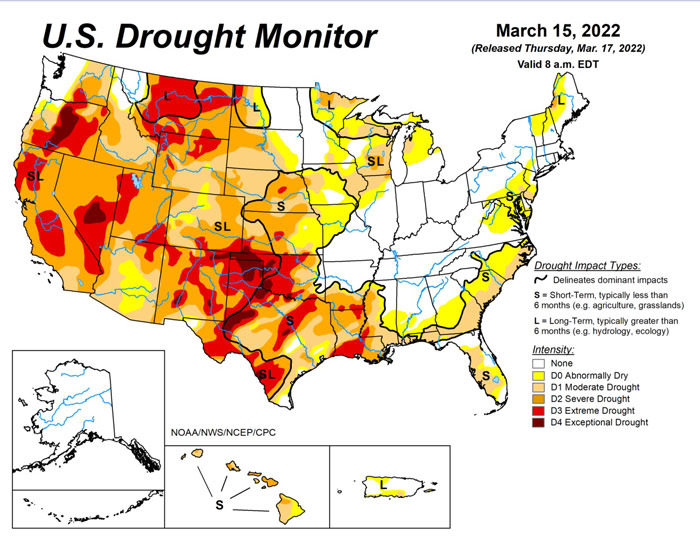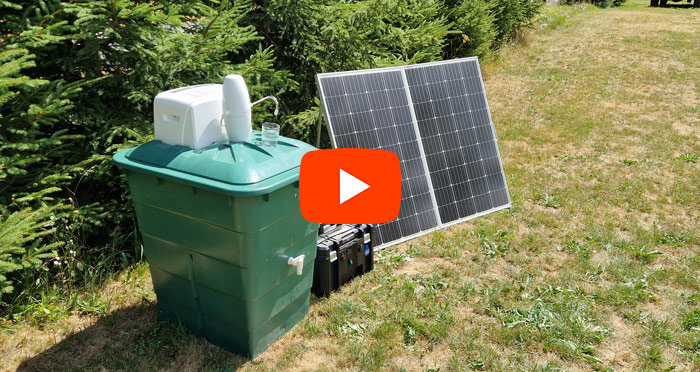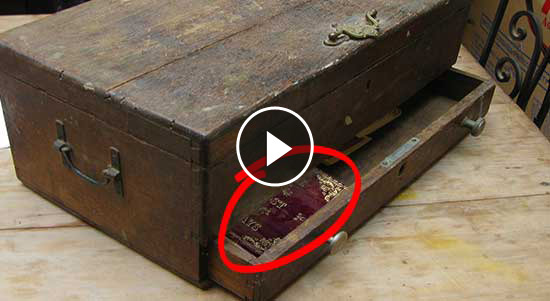Click Here To Join Our Telegram Channel for FREE daily tutorials!
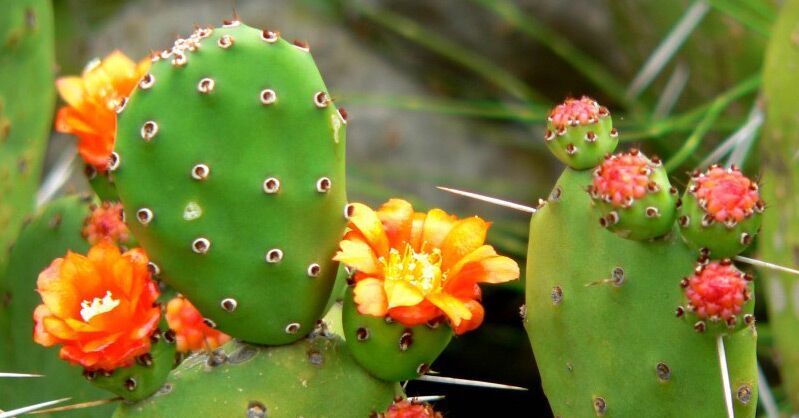
If you happen to find yourself stranded in the middle of nowhere, forced to survive and whatever it is you come across, you might think you’re done for. But you’re not. Plants, in general, make a great source of food as they’re available, obtainable and can meet most of a person’s nutritional needs. But the key point in eating whatever it is you come across consists of identifying the plants first. This is crucial in a survival situation as many of the plants you’ll stumble across could easily kill after one bite. Many are edible, many are poisonous, and telling the difference is what will make you another day! You have to be very thorough and precise, as many poisonous plants look a lot like their harmless relatives. Many cases have been recorded in which people died for confusing hemlock with wild carrots.
Aside from identifying plants, there are other factors you’ll need to consider. Even apparently harmless plants can be life-threatening for various reasons. For example, plants growing near urbanized zones (near houses, along the road) should be avoided. If avoiding them is not an option, washed them carefully before consuming them, as they most like are sprayed with pesticides or contaminated by noxious vehicle fumes. The plants that grow in water should not only be washed but also boiled properly, due to the fact that the surrounding waters could be contaminated. The boiling process reduces the risk of indigestion or even worse complications (like Giardia lamblia, an intestinal parasite).
Many wild plants are abundant in oxalic acids or oxalate compounds, which can permanently damage the kidneys and cause distress to your throat and mouth. The acid, however, is usually destroyed during the process of boiling, baking, roasting or frying. So, if it’s possible, best prepare the plants before eating them. Let’s have a look then at what’s safe to eat and what’s not, in case if you find yourself forced to survive on wild “greens”.
The Water Lily (Nymphaea odorata)
It’s most common to the subtropical and temperate regions and is found floating freely on the surface of the water. It’s set on large, triangular leaves that act as a floater. The corolla (the total of petals) is generally white, sometimes red, and very thick. The flower can be eaten raw, as can the seeds. Its fleshy rhizomes that grow in the mud are what it uses for feeding (similar to a root). The rhizomes must be peeled first before consumption, so make sure to peel off the corky rind. You can boil the root, and the resulting concoction is very useful to cure diarrhea or sore throats.
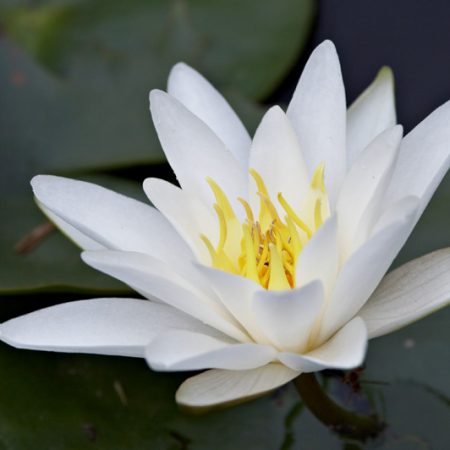
The Baobab (Adansonia digitata)
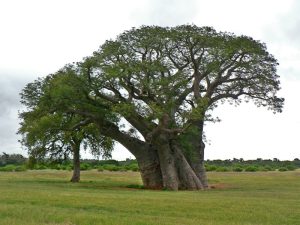
This tree most commonly grows in Africa, Australia or Madagascar, in savannas only. It’s one of the most massive growing trees in the world, as it can reach a total height of 60 feet and a total of 30 feet. It has short branches, thick gray bark, segmented palm-like leaves and white flowers, which hang from the branches. The fruit is about 18 inches long, shaped like a football and cover in thick hairs. Parts of the tree are edible only if the tree is still young. For example, the young leaves can be used for soup and the tender root can be simply eaten raw. The fruit is also fit for human consumption, but only after peeling the outer coating. The seeds can be roasted and grinded into flower. It also has curative properties, easily curing diarrhea if you drink the mixture resulted from the fruit pulp and drinking water.
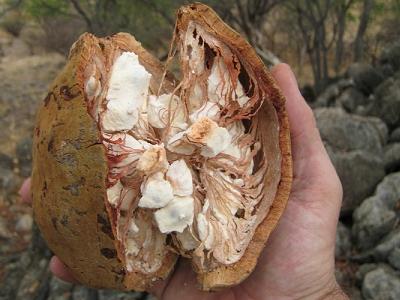
Prickly Pear Cactus (Opuntia sp.)
This cactus is very common to dry and arid regions throughout the U.S. and central South America, but not only. It’s easily recognized by its green flat stems, covered in tiny round dots, covered by pointy hairs. It’s 100% edible (except for the prickly hairs), as most of its mass is comprised of assimilatory tissue, characteristic for plants that grow in arid areas. This tissue is full of water and nutrients. The fruits can be peeled and eaten fresh or mixed with drinkable water to prepare a refreshing drink. The pads can be also used as a natural bandage if you split them in half and apply them over an affected area.
CAUTION: do not eat or touch if the cactus plant is covered in a milky sap!!!
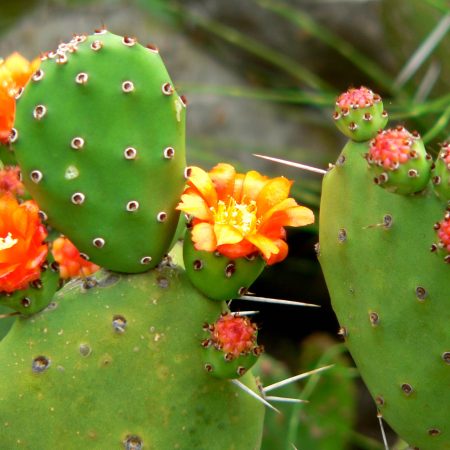
The Tamarind (Tamarindus indica)
It normally grows in dry regions all across Africa and Asia. It has been cultivated for a long time in India and it can also be found in parts of the American tropics, Central America, South America and even the West Indies. It’s a fairly large tree (can grow up to 85 feet tall) and its leaves are divided like feathers (pinnate), with 10 – 15 pairs of leaflets. The pulp of the fruit is very nutritional, as it’s abundant in vitamin C, which is practically fuel for the immune system. The pulp can be mixed with water and sugar (or honey for those with a sweeter-than-average tooth), and if you leave it to mature for several days it will result in a delicious acid drink. The young leaves are excellent for soup, the seeds can be roasted and even the bark can be nutritious if chewed raw.
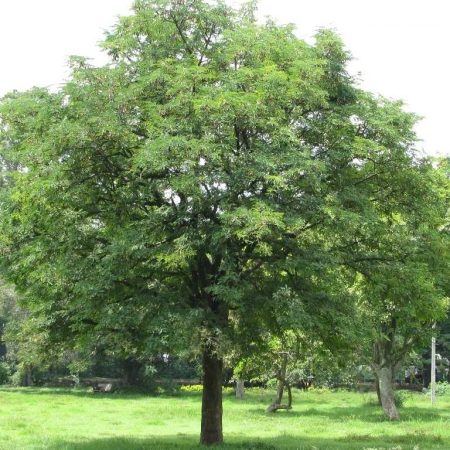
The Ti Plant (Cordyline fruticosa)
Its natural habitat is tropical forests, growing towards the margins. Although it originated in the Far East, it has been planted tropical areas from all around the world. Growing up to 15 feet tall, the Ti has unbranched stems, the leaves being clustered toward the end of the stem. The leaves vary in color according to species, from green to red. The flowers too are clustered together towards the top of the plant. The roots (which can be boiled or baked) and the tender young leaves (best boiled) are very nutritious and highly recommended as survival food. The leaves have a lot of other uses as well: you can craft footwear from ti leaves, use as shelter covers and the terminal leaf (if it’s not unfurled) can be a very efficient natural sterile bandage.
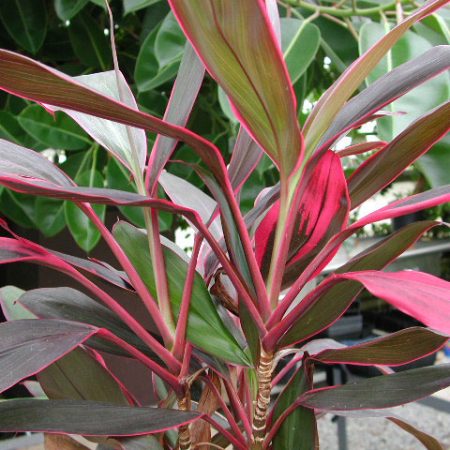
Be aware of the fact that, if you find yourself stranded, nature is not only out to get you, it can also help your cause. However, be very very thorough in deciding what you are going to eat or not, as this wrong decision might be the last one you’ll ever make.
This Crazy Off Grid Device Literally Makes Drinkable Water From Fresh Air:
According to NASA, the U.S. is expecting a 100-YEAR LONG MEGADROUGHT.
It's already begun. Ask the farmers in California. They know.
Every survivalist knows that water is of critical importance. You NEED an independent water source that you can count on!
As an interesting "survival rehearsal" - imagine that you turned the tap on right now and nothing came out. How long would you last?
But what if there was another water source literally hidden in plain sight. That's right, I'm talking about the atmosphere!
The amazing thing about getting water from the natural moisture in the air... is that it is ALWAYS available.
This gives you real water security!
Learn more about how to tap into "Nature's secret water reservoir" and stay hydrated when TSHTF!
Watch the video:
😳 What Tinnitus Does To Your Brain Cells (And How To Stop It)
After 47 years of studies and countless brain scans done on more than 2,400 tinnitus patients, scientists at the MIT Institute found that in a shocking 96% of cases, tinnitus was actually shrinking their brain cells.
As it turns out, tinnitus and brain health are strongly linked.
Even more interesting: The reason why top army officials are not deaf after decades of hearing machine guns, bombs going off and helicopter noises…
Is because they are using something called "the wire method", a simple protocol inspired by a classified surgery on deaf people from the 1950s...

I Can't Help Showing This Off:
If you haven't heard of Claude Davis yet do yourself a huge favor and watch this video.
One of the smartest guys I ever had the pleasure of meeting, Claude set-up a unique prepping system that changed his life forever.
I already tried it myself and let me tell... you I was completely blown away... His surprising tactics could make your life easier and give you the peace of mind you deserve.
Don't just take my word for it... watch his short video and decide for yourself.

Most People Don't Have The Guts To Try This:
An amazing discovery in an abandoned house in Austin, Texas: A lost book of amazing survival knowledge, believed to have been long vanished to history, has been found in a dusty drawer in the house which belonged to a guy named Claude Davis.
Remember... back in those days, there was no electricity... no refrigerators... no law enforcement... and certainly no grocery store or supermarkets... Some of these exceptional skills are hundreds of years of old and they were learned the hard way by the early pioneers.
>> Click here to find out about them now
We've lost to history so much survival knowledge that we've become clueless compared to what our great grandfathers did or built on a daily basis to sustain their families.
Neighbors said that for the last couple of years Claude has tried to unearth and learn the forgotten ways of our great-grandparents and claimed to have found a secret of gargantuan proportions. A secret that he is about to reveal together with 3 old teachings that will change everything you think you know about preparedness:
>>> Click Here To Watch His Short Video <<<

More Off-Grid And Survival Resources:

What REALLY Happens When You Bury a Shipping Container? (Hint: It's A Bit Crazy...)
Shipping containers are all the rage - but if you are thinking about buying one, you MUST watch this video first:
There's a general belief that if you bury a shipping container you can create an awesome root cellar / storm shelter / survival bunker.
But is a shipping container strong enough to handle the pressure?
Watch the video to see what happens:
What Really Happens When You Bury a Shipping Container? (Click To Watch Video)


